This post may contain affiliate links. This just means I may receive a small commission at no extra cost to you for helping them promote their product or service. I don’t endorse any services I don’t personally use or recommend.
Your guide to visiting the Omo Valley tribes independently for 1/4 the price of a package tour.
This is not an excursion for the faint of heart or those who shy away from uncomfortable realities. The Omo Valley tribes exist in as close to another world as one can get. There are few destinations on this planet today (sadly), outside the reach of smartphones and a stable internet connection. Of course, this kind of isolation also comes with a lack of basic healthcare, a consistent supply of nutrient-rich food, or, most interestingly, a language shared with those outside their immediate village. While every tribe in Ethiopia’s Omo Valley practices distinct and varied traditions, the one thing they have in common is how jarring their life is to a Western traveler—even those who have visited challenging destinations like Pakistan, Uganda, and Iraq.
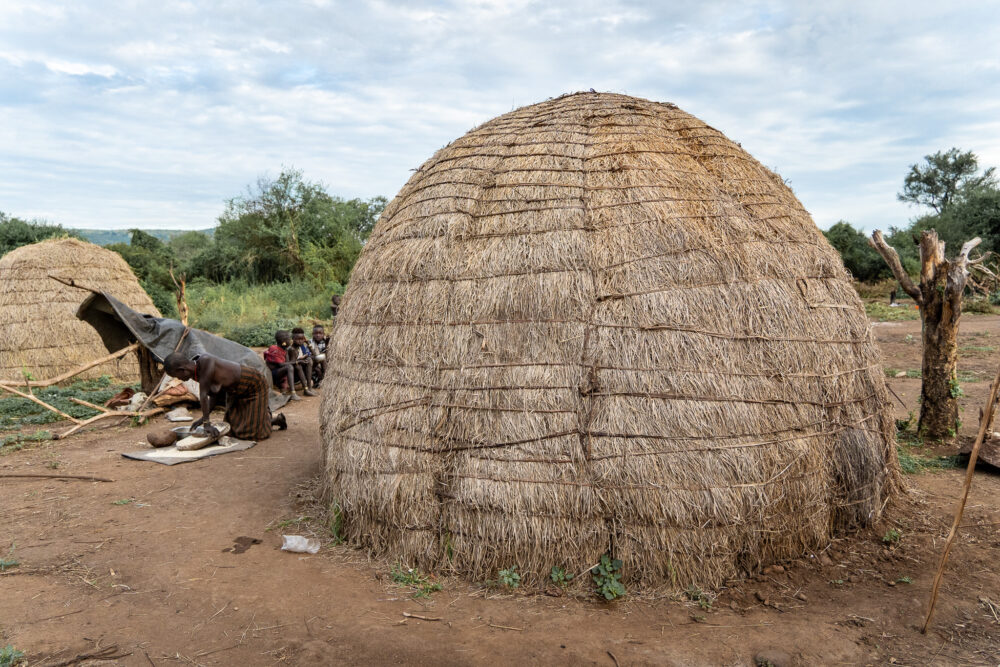
As you travel from village to village, guided by a local translator, you’ll learn about and bear witness to cultural practices that you likely won’t support. Female genital mutilation. Scarrification. A sometimes, painfully cavalier attitude to their sick or starving children. The layers of jagged scars raked across a Hamar woman’s back, freshly opened by her most recent ceremonial whipping. Pot-bellied children, half the size they should be for their age.
Mingi: A term commonly used among the Karo and Hamar tribe to describe a “cursed” child. This can be because of physical deformities or other percieved deformities. Commonly, when the infants teeth grow in on the top of the mouth first. The tribal elders will often sentence the child to death by drowning or abandonment (or worse) to remedy the bad omen on the tribe.
This practice is outlawed in Ethiopia. But still exists in this hard to police remote area.
If you choose to visit the Omo Valley Tribes of Ethiopia on a tour or independently, you must consider what you can stomach. It’s not our place to change the ancient traditions they practice. But visiting these communities can help offer a connection with the outside world. A cultural exchange and a way to financially contribute to the well-being of these communities that exist on the brink of survival.
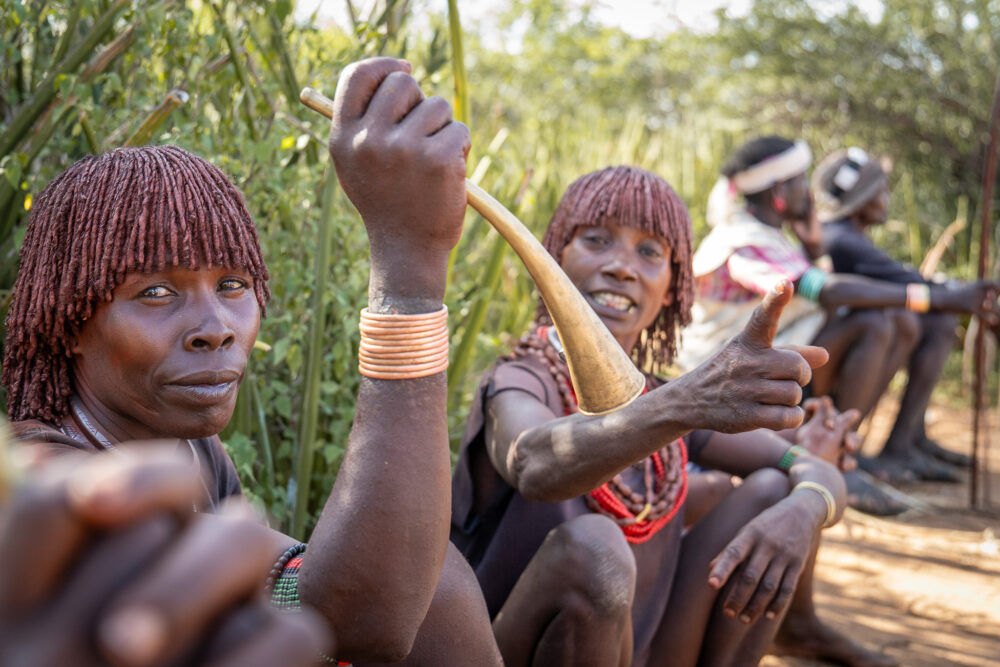
We spent 7 days in the Omo Valley of Ethiopia. Traveling independently through the rolling green landscape of Southern Ethiopia via a series of dilapidated buses packed to the gills with locals and their hefty luggage. The spine-rattling journey led us to knowledgeable local guides who facilitated four village visits (one of which was overnight) with different tribes in the region. This blog post will guide you on your quest to better understand the Omo Valley tribes of Ethiopia and offer up a budget-friendly, authentic way to visit the communities.
Your Complete Omo Valley Guide to Visiting the Tribes of Ethiopia Without an Expensive Tour
Expensive doesn’t equal better in Omo, and I’ll explain why in detail here. Just know that in this region of the world, there’s only so much that money can buy. There is no “luxurious” tourist village to stay in. This whole experience is meant to be immersive and give you a better understanding of how other humans on this planet live.
Is It Possible to Travel Without a Tour to the Omo Valley Tribes of Ethiopia?
Yes. However, it is not possible to visit the various tribes without a local guide.
In fact, you’ll actually probably hire a few different guides depending on how many different tribes you visit. Each speaks a different language and has different requirements for foreigners visiting the community.
A local guide can be hired from Addis Ababa, Arba Minch, or Jinka (I recommend Jinka & I’ll explain why later) and offers cultural insights as well as translation so you can actually chat with tribe members. A tour booked online or in Addis Ababa offers similar services utilizing (and underpaying) local guides while handling all your hotel bookings, transportation, etc for the duration of your stay in the Omo Valley.
Skip the package tour + find a guide on the ground that you trust instead
While the most popular way to visit is to book a tour from Addis Ababa (for about $2,000 per person) and travel by private car or plane straight from the capital to the tribal region, independent travelers can ride the local buses as far as Jinka and hire a local guide from the small town to facilitate your tribe visits. This is obviously a fraction of the tour price. We paid $300 for two people!
The other great thing about traveling independently to Jinka before you hire a guide is you get to dictate what you want to do. You’ll tell them which tribes you want to visit, how long you want to stay, whether you want to camp or stay in a local guesthouse, and what kinds of food and ceremonies you are interested in seeing. This is essentially a private tour catered to you!
Why can’t/shouldn’t you just rent a moto and drive yourself to the tribes from Jinka? Well for starters, these villages are not well-marked on maps which would make finding even the more well known tribes quite difficult. Secondly, it’s real rude to show up unannounced with no way to communicate with the tribe members. In fact, it’s not allowed. It’s kind and responsible to employ local people who can make your experience with the Omo Valley tribes more memorable. Your guide will handle the financial contribution to each tribe you visit along the way so you can be sure you are donating the correct amount.
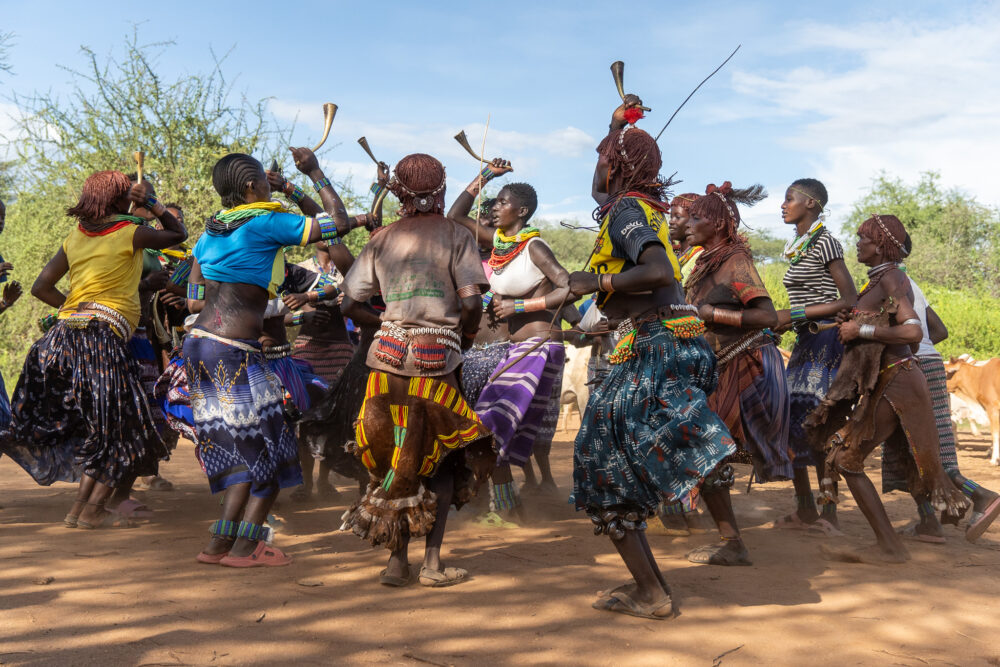
Let’s take a quick look at the Omo Valley before we dive into the tribes I recommend you visit and a step-by-step process of how to plan your budget-friendly visit.
What is the Omo Valley?
The chocolate-colored flowing waters of the Omo River cut through the Southwestern corner of Ethiopia and empty in Lake Turkana across the border in Kenya. The expansive, lush region surrounding this river is known collectively as the Omo Valley. This area lives by the river. Its floods feed the plants, and inherently the communities who reside within the valley. The lower portion of this valley was named a UNESCO site back in 1980, as holds an invaluable link to all our heritage…The Omo Tribes themselves.
Ethiopia is the cradle of humanity, and the tribal communities living here off the land are the last lingering vine connecting us with our ancestors.
How Many Tribal Communities Are in Omo Valley?
This is a more complicated question than you might think.
There are eight different tribal lineages that have entirely different customs and traditions. But those original eight tribes, over the course of thousands of years, have split off into dozens and dozens of distinct tribal identities. While some of the traditions and sub-languages overlap, they wouldn’t consider themselves the same “tribe” any longer.
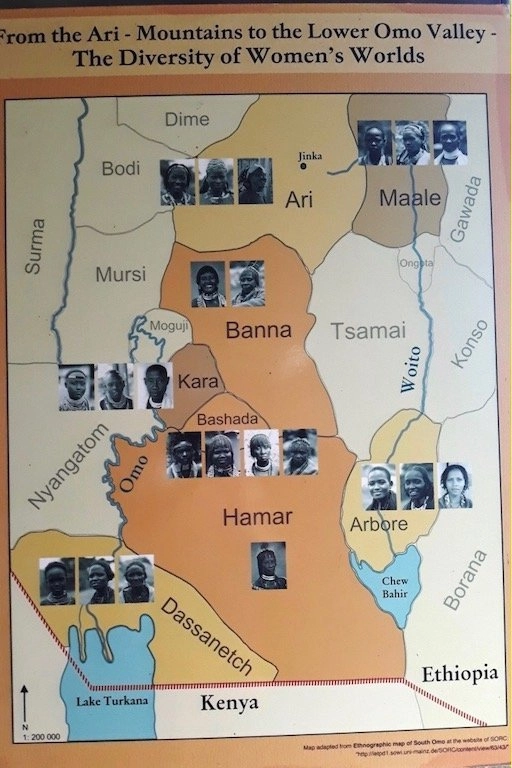
Today, it’s estimated there are around two million people living in the Omo Valley. But an official headcount is an undertaking that will likely remain impossible for a long time.
The Omo Valley Towns You Need to Know
Here are the Omo Valley towns at a glance.
Arba Minch
Arba Minch is the last semblance of a real town that you’ll encounter as you head south from Addis Ababa. There are no tribes in this city, but you’ll have to pass through here regardless.
You’ll encounter many guides here who will insist that there are no guides in Jinka. This is a lie. They just want you to book an overpriced tour with them.
Jinka
This is the capital of South Omo. But don’t expect a bustling city center. Jinka is a small town at best and the gateway to the tribal communities. You’ll want to find your guide here.
Turmi
Turmi is deep in South Omo and very near where the Karo and Hamar people reside. You’ll likely stay at least one night here in a local hotel if you plan to visit either of those two tribes. There are some good places to eat that your guide can take you to, but the town is very small, little more than two dirt streets.
You could continue your bus journey down to Turmi and hire a guide with a motorcycle to visit these tribes to cut costs even further. But this is even more advanced level travel as few people speak English well and you’ll need a significant amount of time to find local guides.
Which Tribes to Visit in the Omo Valley
We visited four different tribes with very different cultures and traditions during our one-week stay. It was all arranged with the help of our local Omo Valley guide.
Our Recommended Omo Valley Guide —-> Reco: +251 91 671 2096
Generally, the more tribes you visit, the more money the trip costs. Also, some tribes (like the Hamar and Karo) live further from Jinka, requiring a longer transport day in your hired car. This also increases the cost of your trip.
I really recommend visiting at least three tribes to get a good grasp of the cultural diversity of the area. Here, I’ll explain the most interesting tribes to visit.
1. Mursi
By far, the most popular of the tribes to visit. I cannot stress this enough…you should visit the Mursi. You’ll recognize them immediately by their trademark hand-crafted lip plates. The Mursi live mostly within Mago National Park near Jinka and are more easily accessible from the city. They are pastoralists and without a doubt my favorite of the tribes to visit. The Mursi are an animist, hunter-gatherer, semi-nomadic people with about 15,000 members. They are polygamists, and cows are their prized possessions. Much like the Karamoya of Uganda, they drink the blood of their cattle, but here, it is far less often.
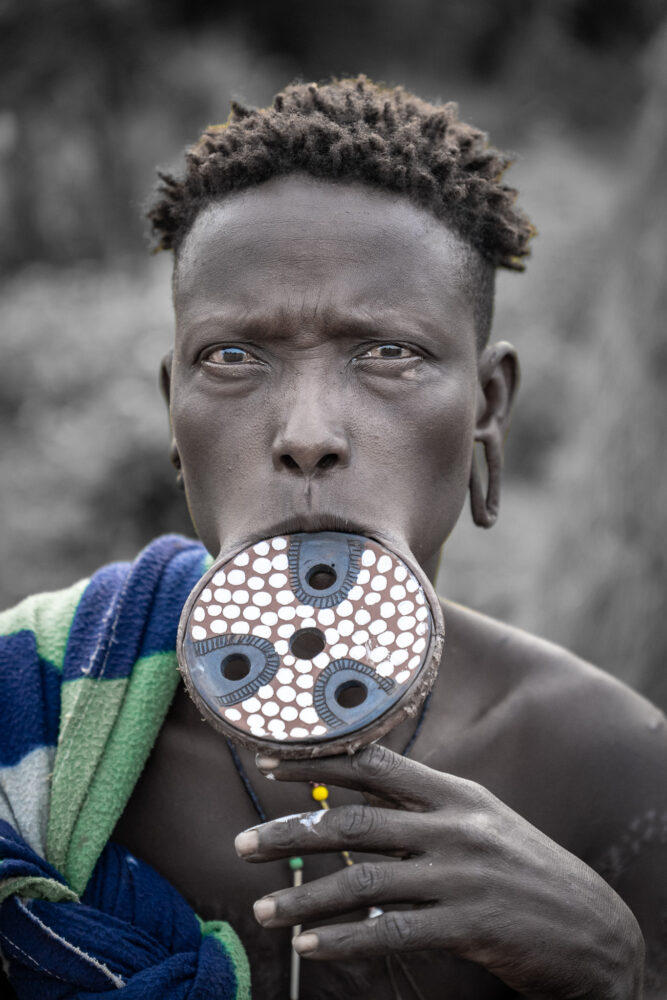
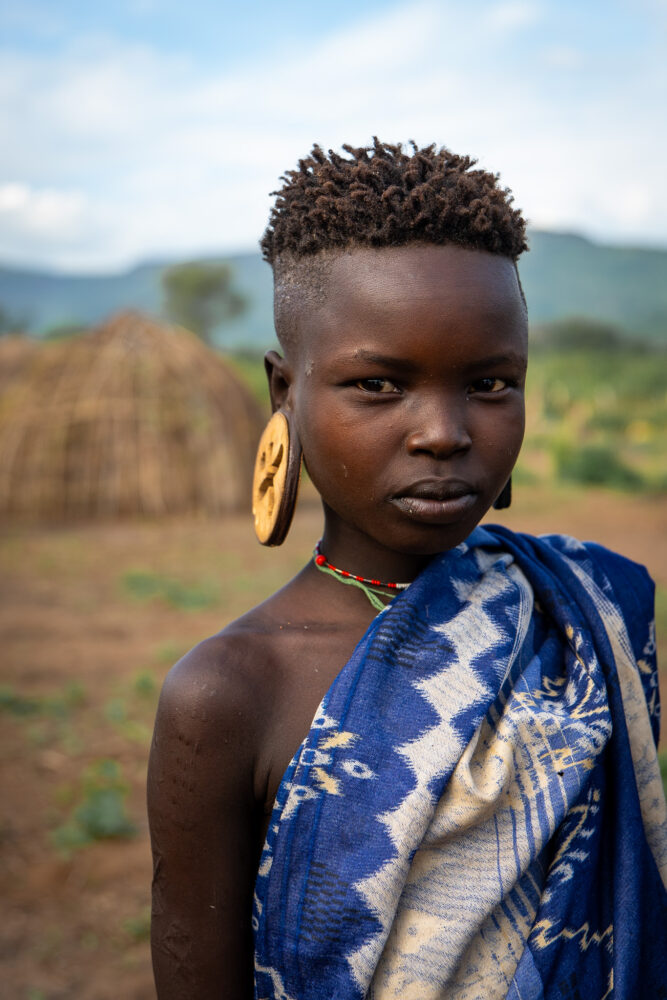
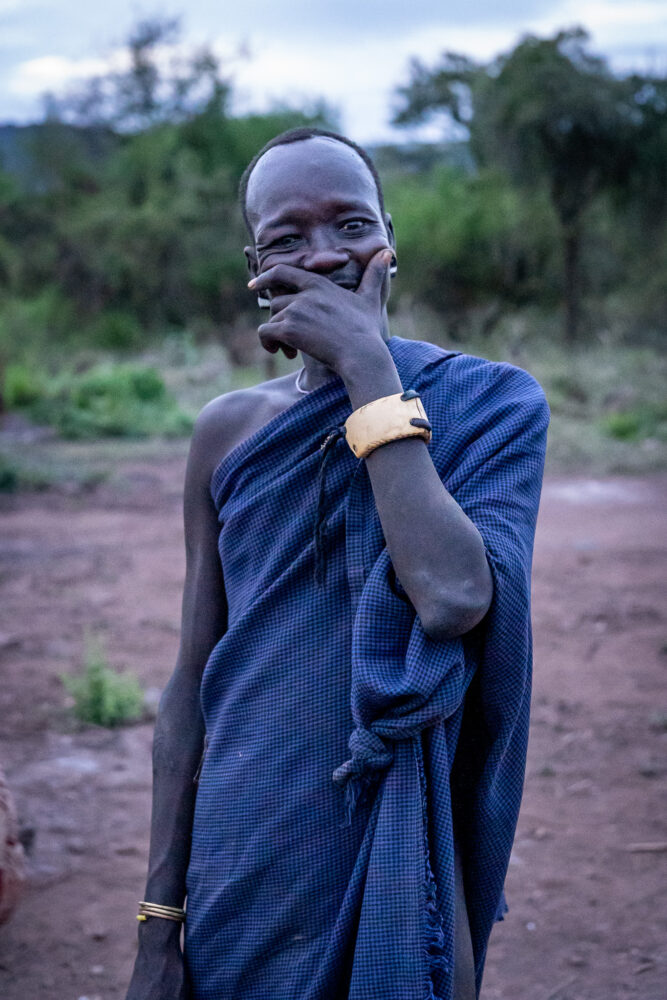
They live in Mago NP, so that when crops fail in this very volatile region, they can have easy access to hunting. Since Mago is filled with endangered and unique wildlife, this is obviously not ideal. But it’s a case of survival for them. Climate change is likely only to exacerbate this problem.
Are the Mursi a “Touristy” Village?
Many people looking for an untouristic tribal experience will consider skipping the Mursi as certain Mursi communities are known to make tourists feel as though they are a walking, talking wallet. But it’s only the most popular Mursi villages. These are the ones that the large tour groups go to. You can visit one of the other villages if you ask. You can also stay overnight, which greatly enhances the experience.
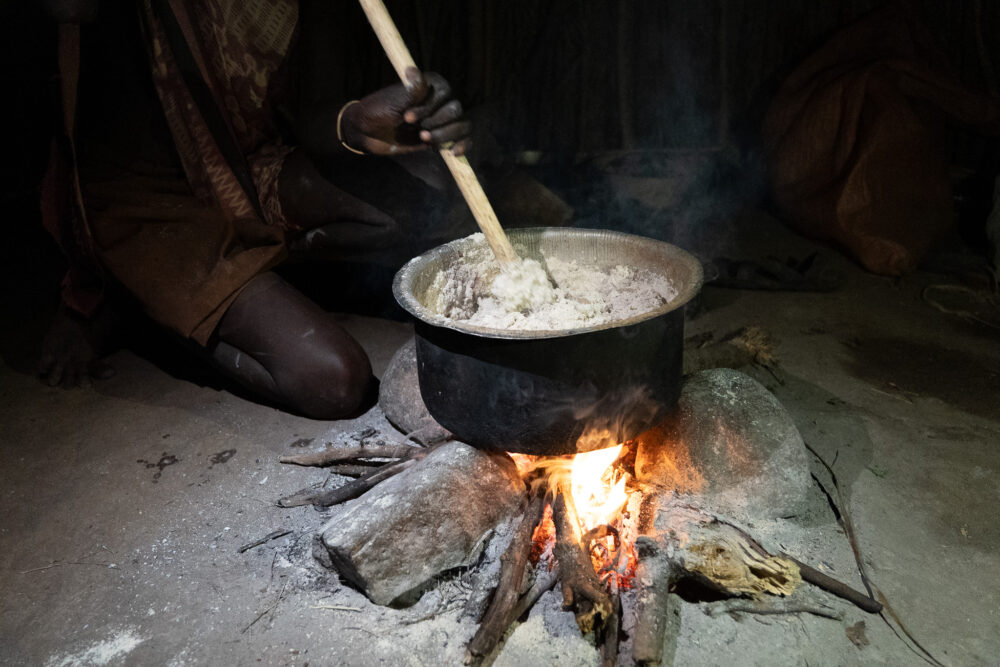
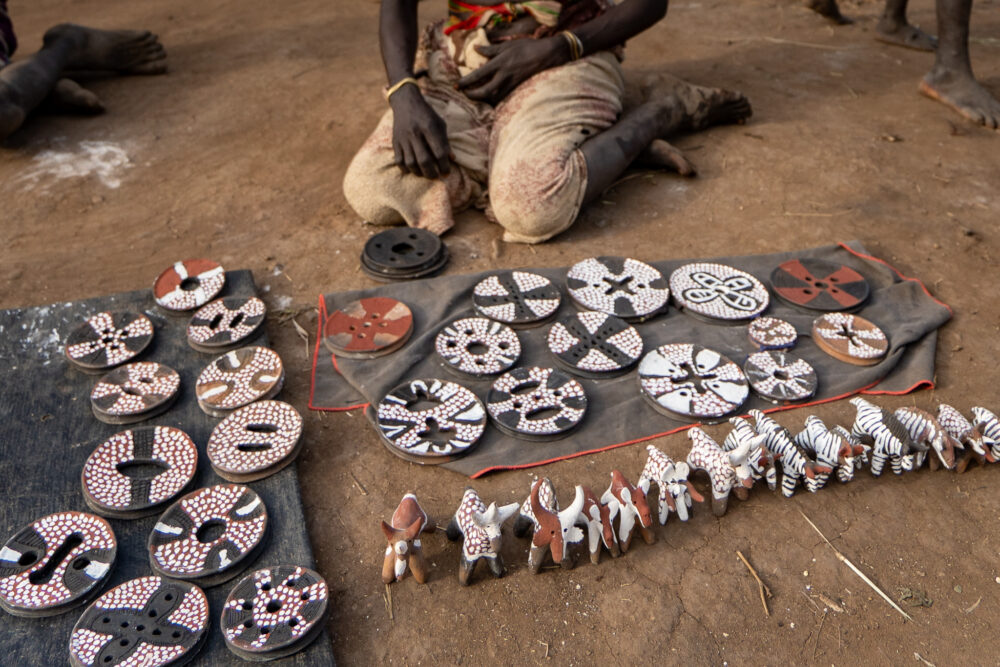
What Do I Mean When I Say Untouristic Tribal Experience? Over the decades, photographers and adventurers have filtered into the tribal communities to take their shots for NatGeo and other publications. This interaction with wealthy tourists has created a market for trinket-selling and handouts. Some travelers who don’t choose their visits carefully will end up at VERY heavily trafficked villages and will immediately be bombarded by tribe members selling bracelets, trinkets, or just begging for money. You should pay money to be there. But it should go to the tribe as a whole. And to put it bluntly, your experience is going to suck if the only thing tribe members are focused on is getting money off of you.
2. Karo
The Karo are number two in terms of popularity. They are also one of the eight original tribe lineages. Covered in white, red, and black body and face paint, they create lovely art on their skin. They also decorate themselves with scarification. They also do the bull-jumping ceremonies but only once every 7 years. If you’re visiting during that time, you should definitely prioritize this ceremony. They live in large groups of about 300 people, so the villages are more crowded, and homes are permanent.
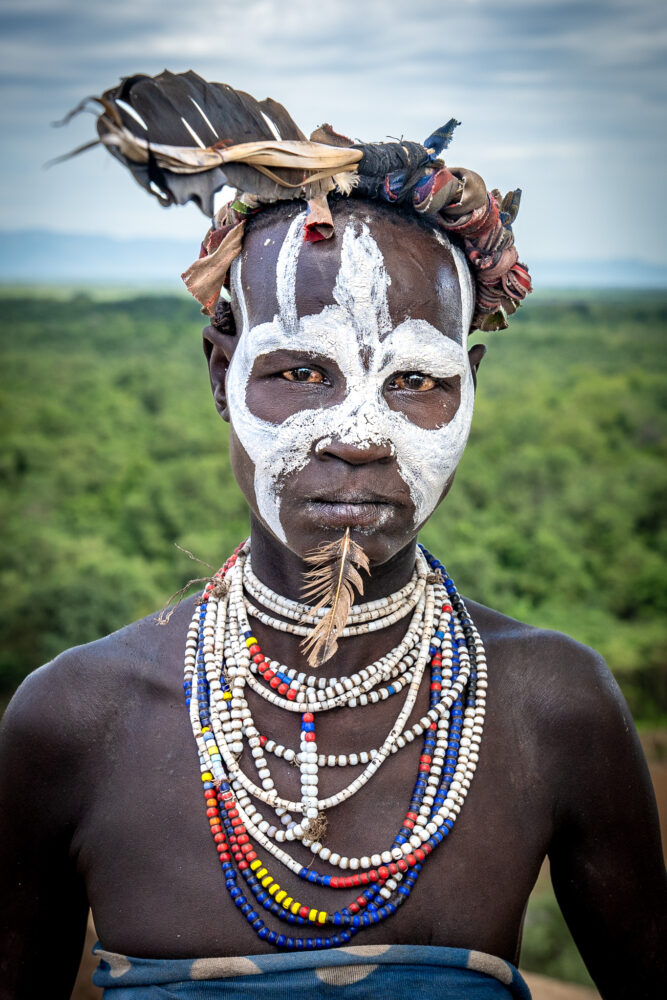
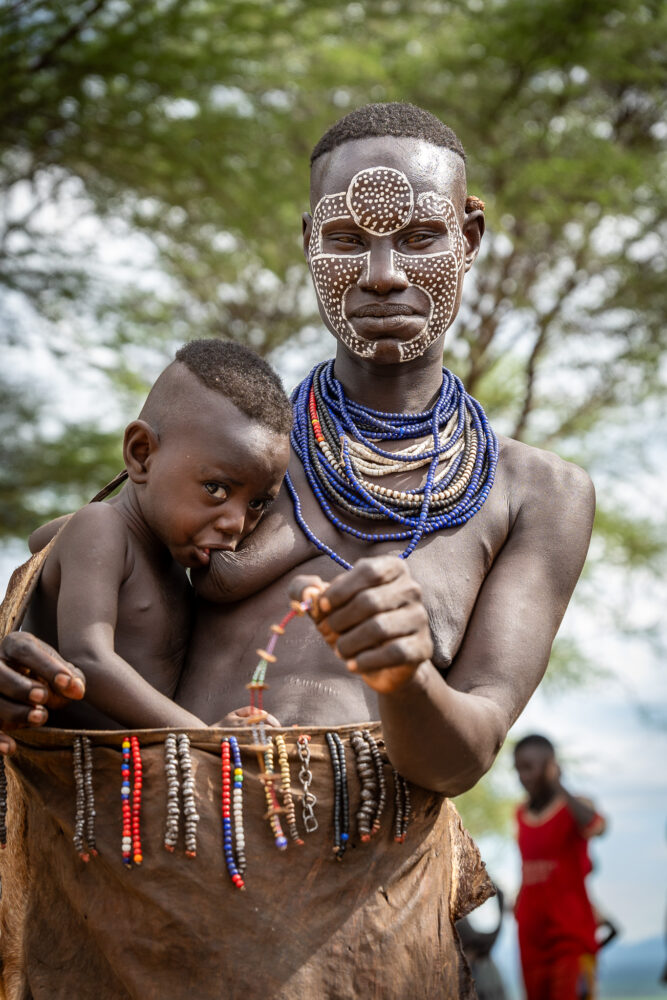
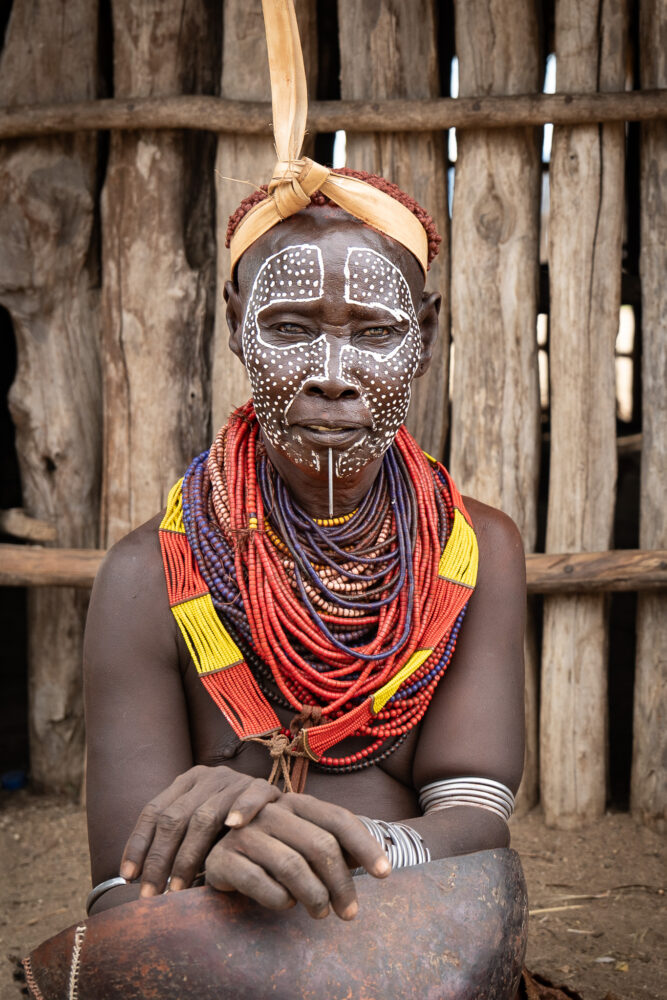
This is another tribe that I really recommend an overnight stay in a traditional home with. They live deep within the Southern portion of the Omo Valley, so it takes time to visit them.
3. Hamar
The Hamar are one of the most interesting tribes in the Omo Valley. They coat their hair in thick orange clay, forming tight dreds cut into a bowl shape. Time your visit correctly, and you can witness the bull-jumping ceremony that proceeds a Hamar wedding. Cattle are very important to the Hamar but they also do a fair amount of farming. When it comes to traditional attire you’ll notice the women all wear cattle skirts rimmed with bottle caps.
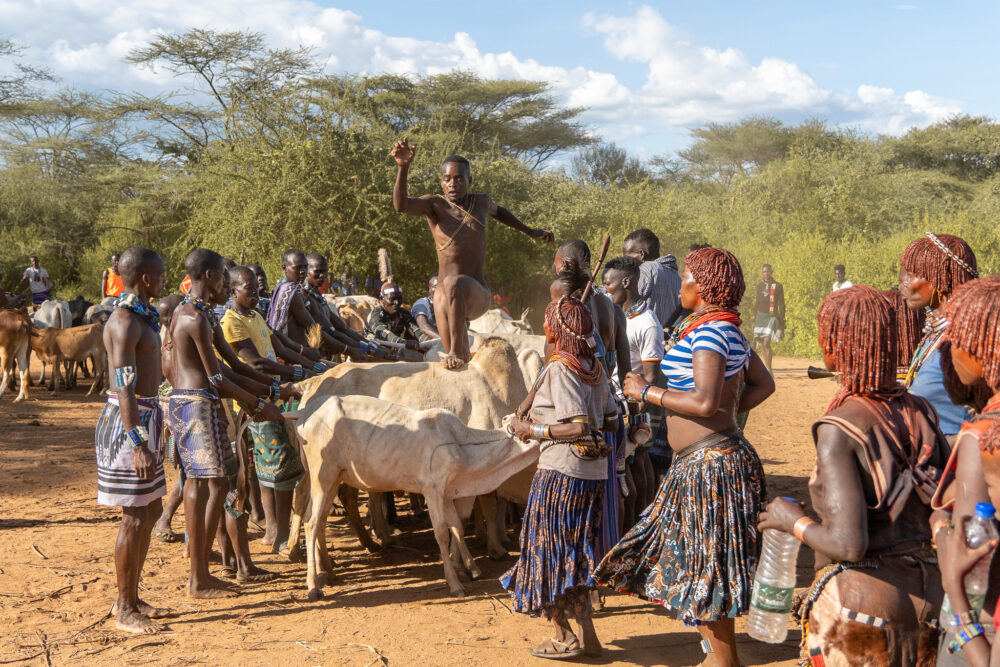
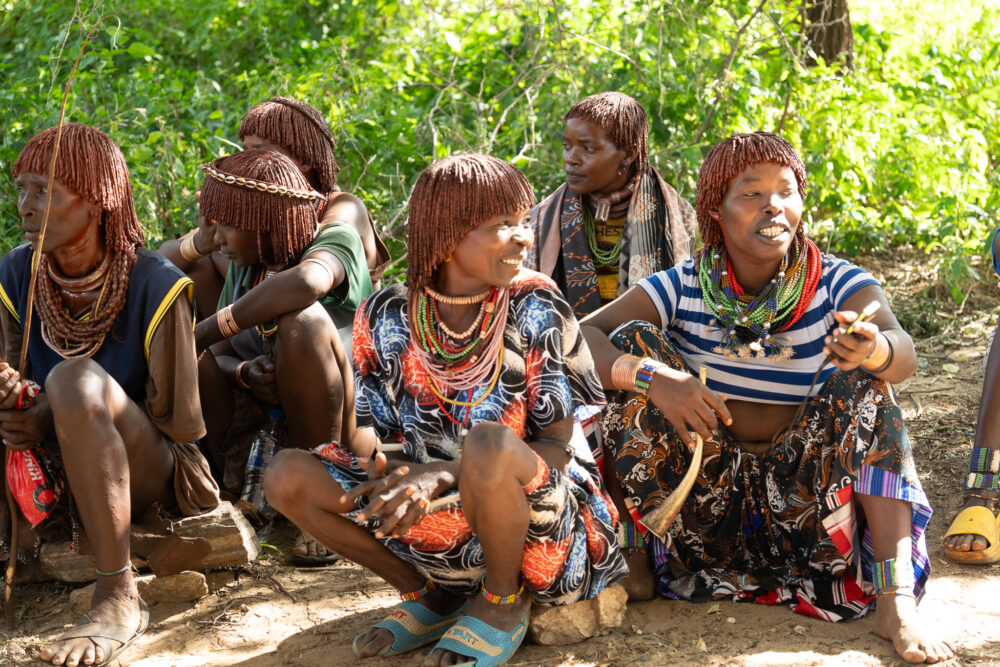
While I wholeheartedly recommend visiting the Hamar, this tribe, more than any other, will test your limits. They are the tribe with the brutal and sometimes violent traditions. We watched women get (voluntarily) whipped with flexible branches until they bled from large open gashes.
You’ll also see many Hamar (and other regional tribes) if you visit the Dimeka’s market, which is held on Saturdays. This is a great place to buy real locally made goods.
4. Bana
While the Bana have a lot of overlap with the Hamar (you’ll notice the hair), they are more agrarian and have success farming in small communities. You can visit one of these remote homes and meet some of the tribe members over coffee. They make a unique brew with the whole fruit. The villages here are more distant and sparsely populated to make room for all their farming and cattle. There are about 200,000 Banna or Bana people.
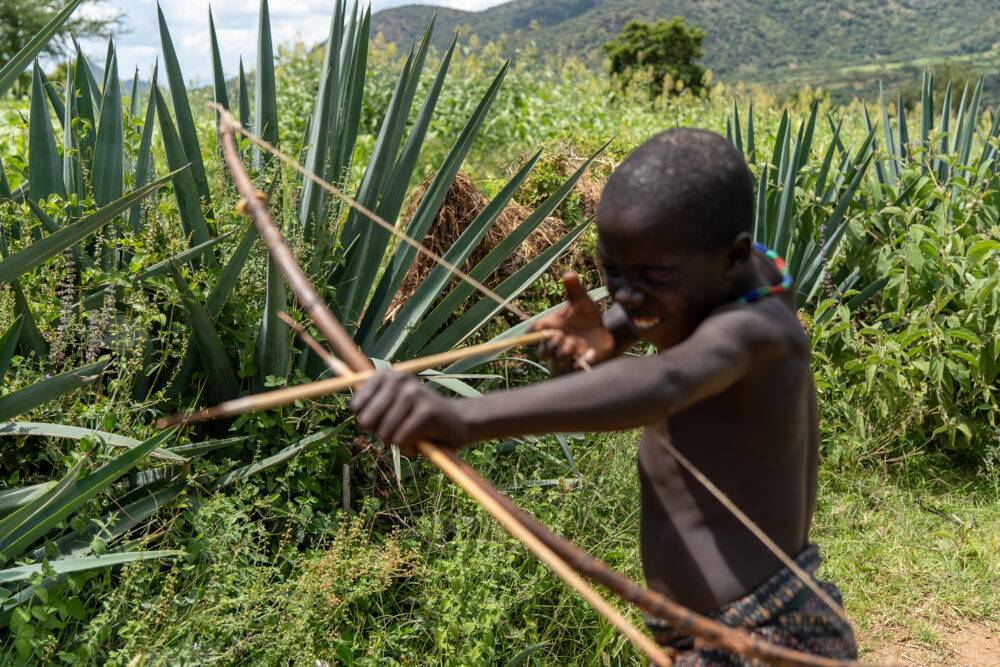
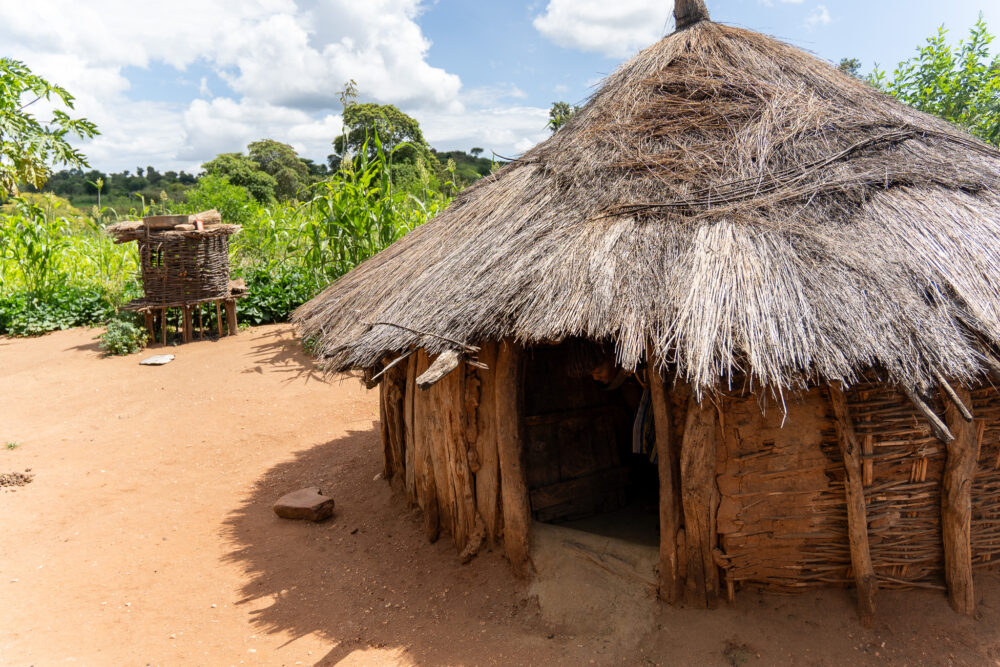
Alternative Tribes
- Suri Tribe. You will have seen them photographed in many NatGeo pieces. Famed for their use of flowers in their traditional decor, they are one of the southernmost tribes, which means to visit them, you’ll need at least 3 extra days in your already lengthy tribal visit.
- Dorze. A unique community of weavers who reside in unique, intricately woven homes not too far from Arba Minch. Easy to visit as a day trip on your own from town. They have a local beer you should try.
- Dassanech. Known to be one of the poorest ethnic groups in Ethiopia. This is a semi-nomadic group that requires a police escort to visit as it is so close to the Kenya/Sudan/Ethiopia borders.
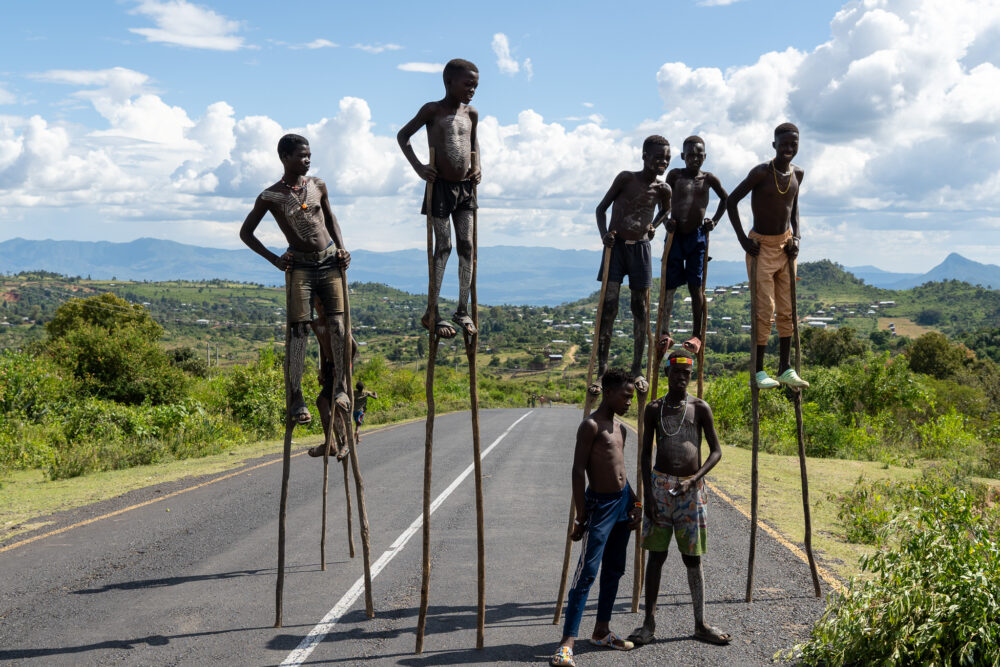
Exact Tribe Visits You Should Ask Your Omo Valley Guide For
In my professional opinion, this is the absolute best trip plan for visiting the Omo Valley Tribes.
- Mursi Visit w/ overnight stay (camping). Be sure to specify you want a more off-the-beaten-path tribe visit.
- Bana visit/coffee stop.
- Karo. Overnight stay in a local home.
- Hamar visit to a bull-jumping ceremony.
- A local market that’s near the Hamar tribe if you can. The further from town, the better. Different markets happen on different days though. The best being on Saturdays.
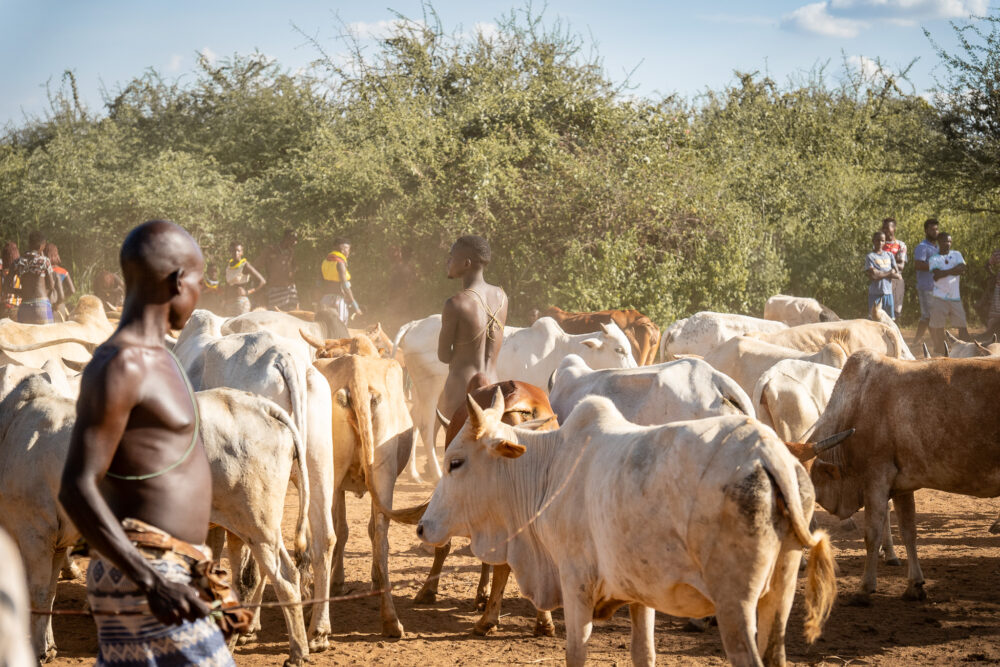
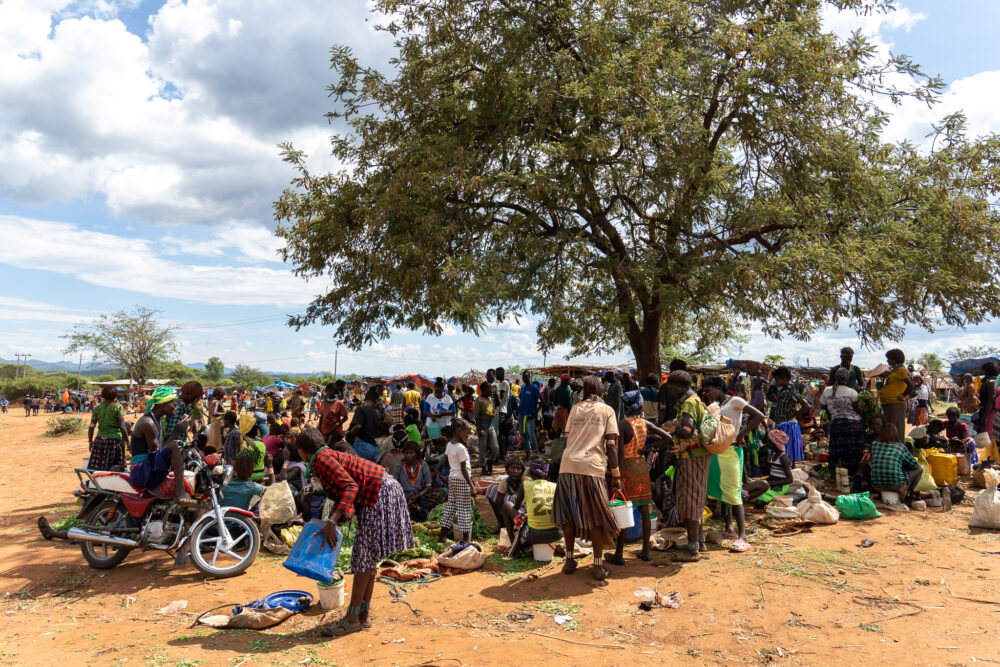
Ask your Omo Valley guide for these things, and you’ll be happy. If you have longer than 3 days in the tribal region, I recommend adding on some of the alternative tribes I mentioned above.
Costs of Travel to the Omo Valley
This is how much you can expect to pay if you travel independently in the region and hire your guide and driver in Jinka. Specifically, if you use the Omo Valley guide that we recommended above.
- Tribal visits as described above (without an overnight with the Karo): $340 including guide tip
- Four nights in local hotels: $38
- Bus Journeys in total: $56
Our total trip cost for 7 days in the Omo Valley for two people: $517
This includes the national park fee, photo permits for the tribes (the chiefs charge money), donations to the different tribes you visit, English-speaking guide, driver, gas, all food, all hotels/campsites, and security guard for visiting certain areas.
If you were to book the EXACT same trip in Arba Minch (after just taking one 12-hour bus from Addis rather than two), it would cost $800. This is why if you’re a budget-conscious traveler you should continue on to Jinka for the best deal.
Should You Pay Extra to Camp With the Mursi or Karo?
I would highly recommend both if you can sneak it into the budget. Overnight stays are the best way to guarantee that the tribe treats you as if you actually want to learn something and participate in their daily life rather than just ogle. The tribes we stayed overnight were our resounding favorites.
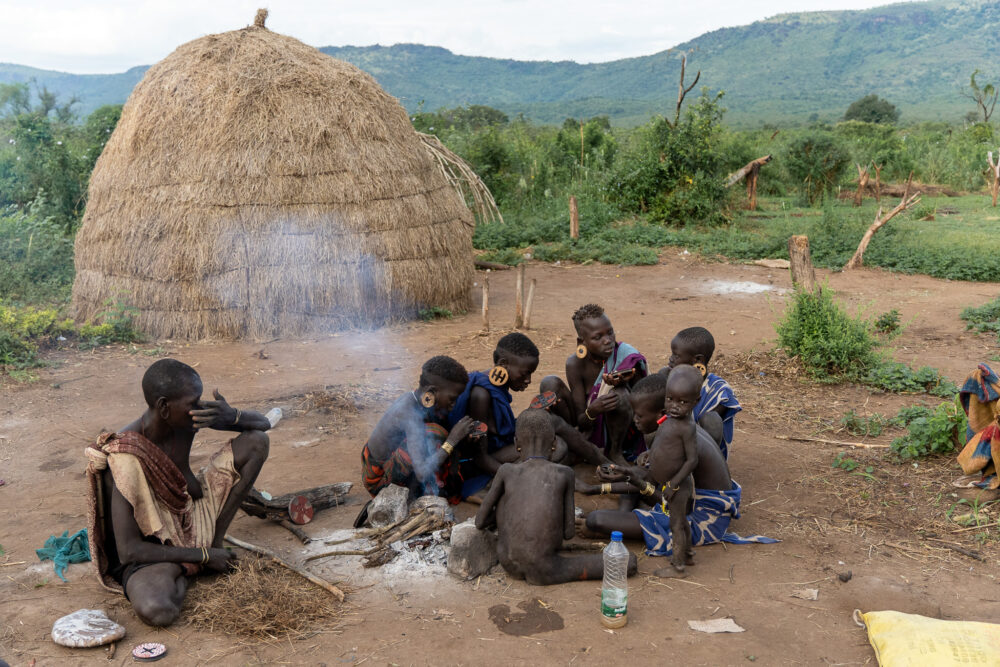
If you skip the camping experiences, you could visit the four tribes I described above for about $220 for two people. But expect this to feel much more transactional and touristy.
How Long Do You Need To Travel Independently in the Omo Valley?
You need one week to visit the Omo Valley tribes on a budget. This is because it takes two full days to travel between Addis and Jinka. Which translates to four days of bus travel in total. Add to that 2-3 days of tribe visits, and you’re looking at a one-week minimum. It will be an arduous journey at that pace, though.
If you want to add on any of the alternative tribes (which, if you have the time, I recommend), you’ll need at least 10 days for this excursion.
Short on Time? You could trim your visit to five days if you fly from Addis to Jinka on Ethiopian Air.
Ethiopian Air Hack: If you fly into the country on an Ethiopian Air flight, you qualify for 50% off all domestic flights on Ethiopian Air. This would make the $300 round-trip Addis to Jinka flight a mere $150 per person. Potentially worth the trade-off of avoiding 24 grueling hours on motion-sickening local buses each way. Getting around Ethiopia is maddening without domestic flights due to the long transport times and horrific roads. Please don’t make the same mistake we did, and make sure to take advantage of this hack. For more info on how to book these discount fares, read my Backpacker’s Tips to Travel in Ethiopia post.
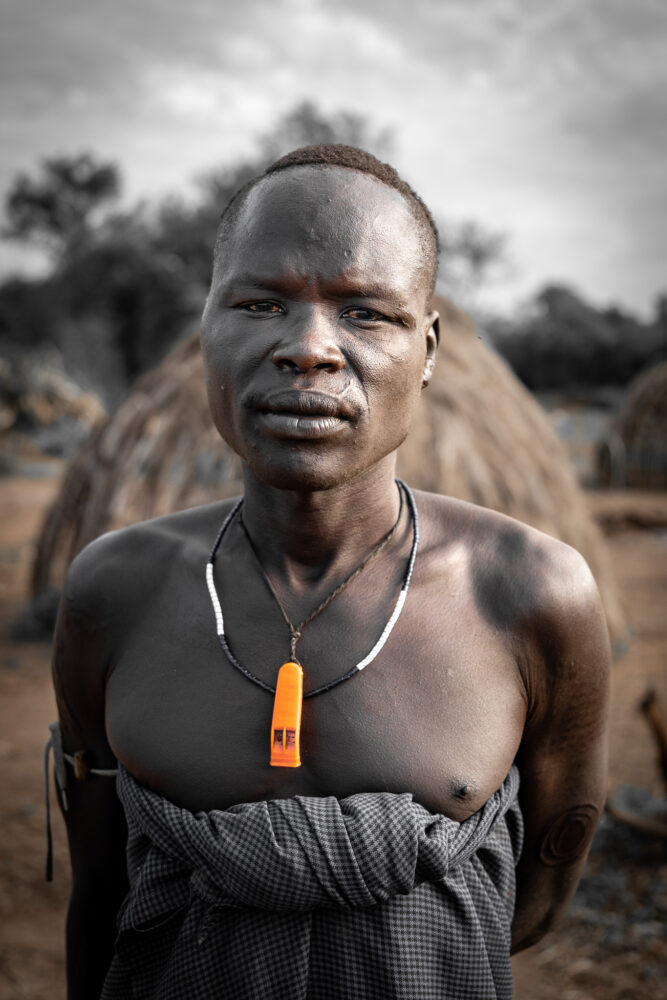
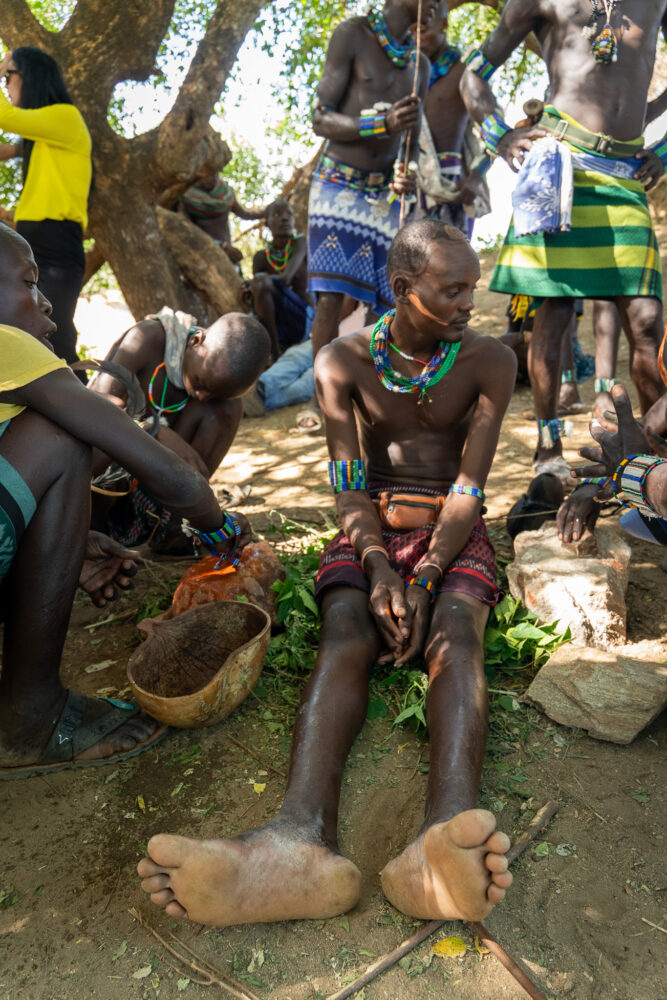
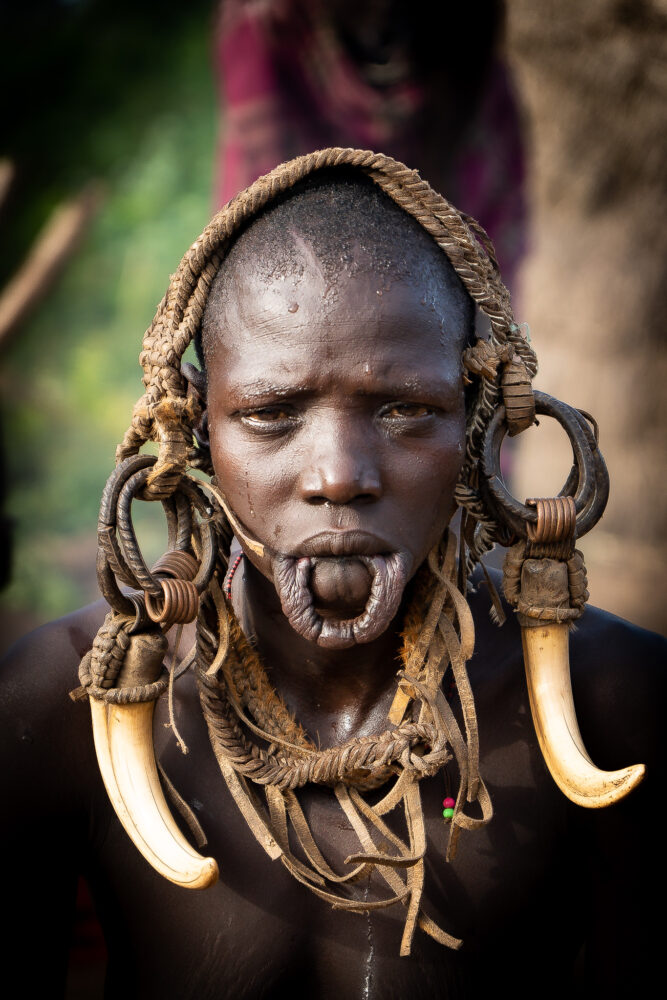
How to Reach the Omo Valley Without a Tour
Now, I’m not big on including “how to get anywhere” in my blog posts. Usually, the answer is as simple as heading to the bus station or airport and buying yourself a ticket. But the Omo Valley is a little more complicated than that. As I mentioned, reaching Jinka (your ideal Omo Valley destination to locate a guide/translator) takes two full days.
Booking Your Bus Tickets
The bus from Addis to Arba Minch should be purchased at least one day in advance, and it’s about $11 (1375 Birr) per person. It’s a proper bus with A/C and all operators are essentially the exact same. You can buy your tickets near the St. Estifanos Church in Meskel Square. As with all Ethiopian buses, it will leave at like 4 AM so be prepared for a long day. Be sure to put your large bags in the undercarriage of the bus.
The bus from Arba Minch to Jinka is a ragged small local one. You don’t need to purchase tickets in advance but you should arrive well before the bus departs to ensure you have a seat. The bus leaves at 6 AM, get there before 5:30 AM. Your bags will have to go on the rooftop of this bus and it will last a minimum of 8 hours even with few stops. Our was closer to 12 hours. It’s about $4 per person or 415 Birr.
To get back to Addis Ababa, you’ll do the same route in reverse.
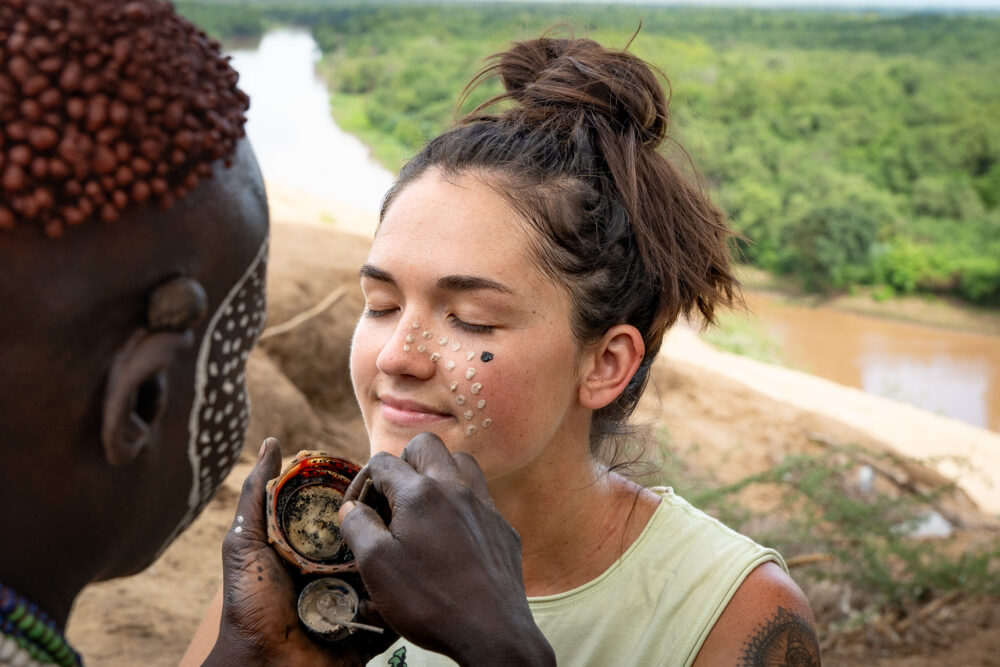

Best Hotel in Arba Minch: Tourist Hotel
Arba Minch has many acceptable hotels, but this is the only one in the town center that’s an easy walk to everywhere else. The food they serve here in the garden is actually quite good too.
I recommend calling ahead to book at least 1-2 days in advance. +251 46 881 2171
Best Hotel in Jinka: Nassa Hotel
Walking distance to the bus station, very comfortable, and only $11 a night. There is little to nothing to do in Jinka. It’s a much smaller town than Arba Minch.
Again, I would call ahead: +251 46 885 7485
Important Items to Bring With You To Omo Valley
Here’s a quick Omo Valley Guide packing list of items that will make your life much easier.
- Mosquito repellent. A lot of it.
- Long sleeve, loose clothing. You should also wear pants if you can.
- Sun hat. It’s seriously hot out there.
- Cocoon sleeping sleeve. Bed bugs can be a problem in Ethiopia.
- Lifestraw Bottle. So you can drink from the rivers safely.
- Pepto-Bismol to settle the stomach after some questionable meals.
- All the cash you will need for the trip. Arba Minch has *some* atms that work occasionally. But you should just prepare to have all the cash you need from Addis.
- It would be much appreciated if you bring a few supplies for the tribes like soap, salt, little gifts for kids, bananas, etc.
A Few Extra Things to Note About Travel in the Omo Valley
Let’s cover the odds and ends of important things you should know before you plan to travel to the Omo Valley in Ethiopia.
Best Time of Year to Visit
Dry season. October through March. This is because the roads become completely impassable during the rainy months. If you want to visit the tribes, you’ll need to travel during these months.
Camera Etiquette & Ceremonies
Obviously, you’re going to want to take photos during your stay. But being respectful is more important than any photographic moment. Fortunately, most tribal members are more than happy to let you take photos. Just be sure to ask when you arrive.
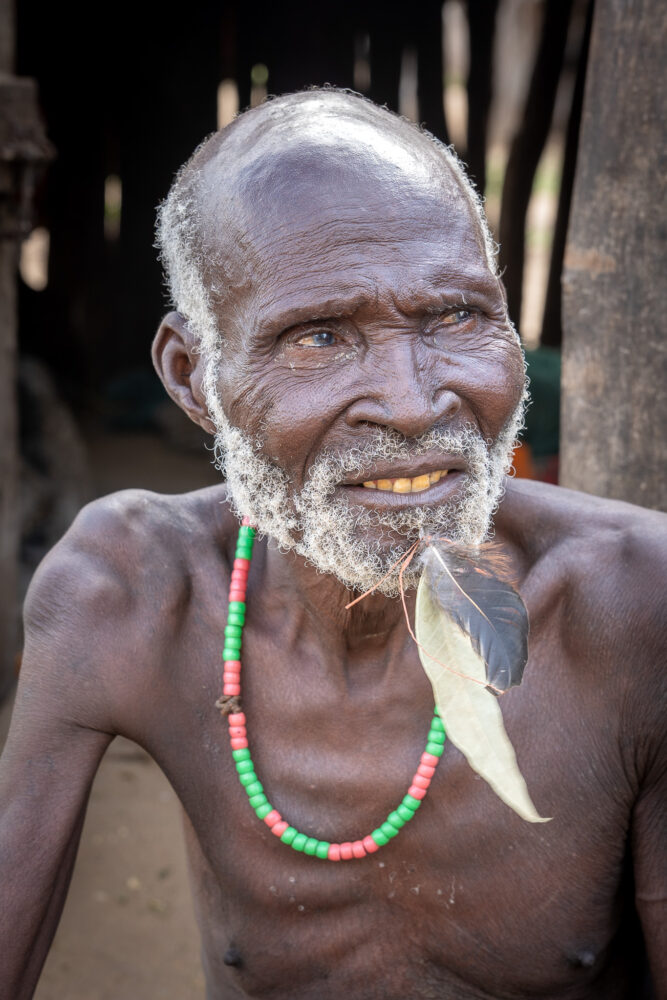
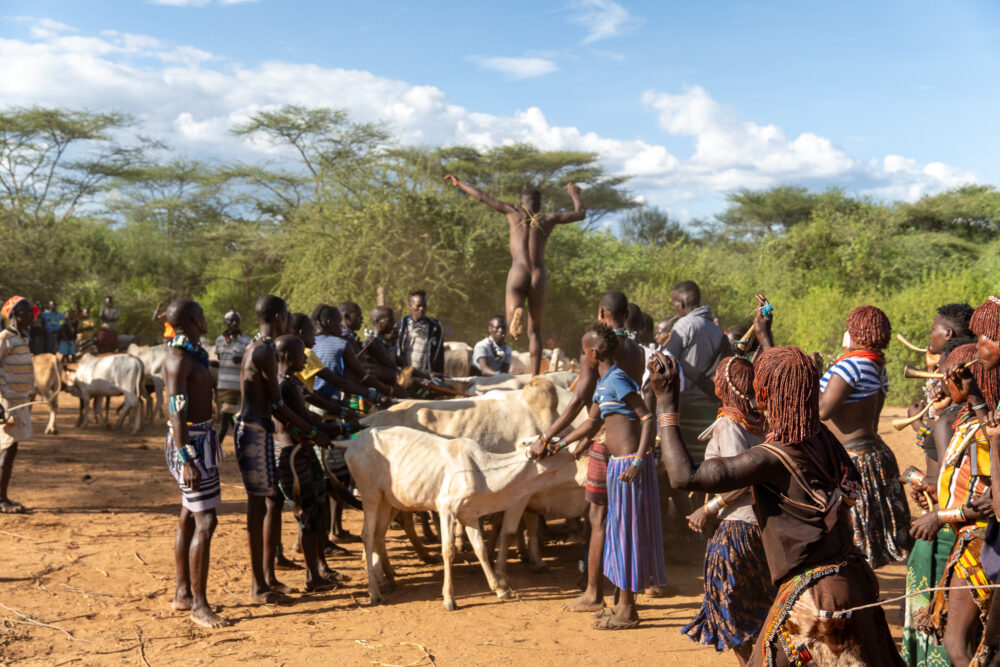
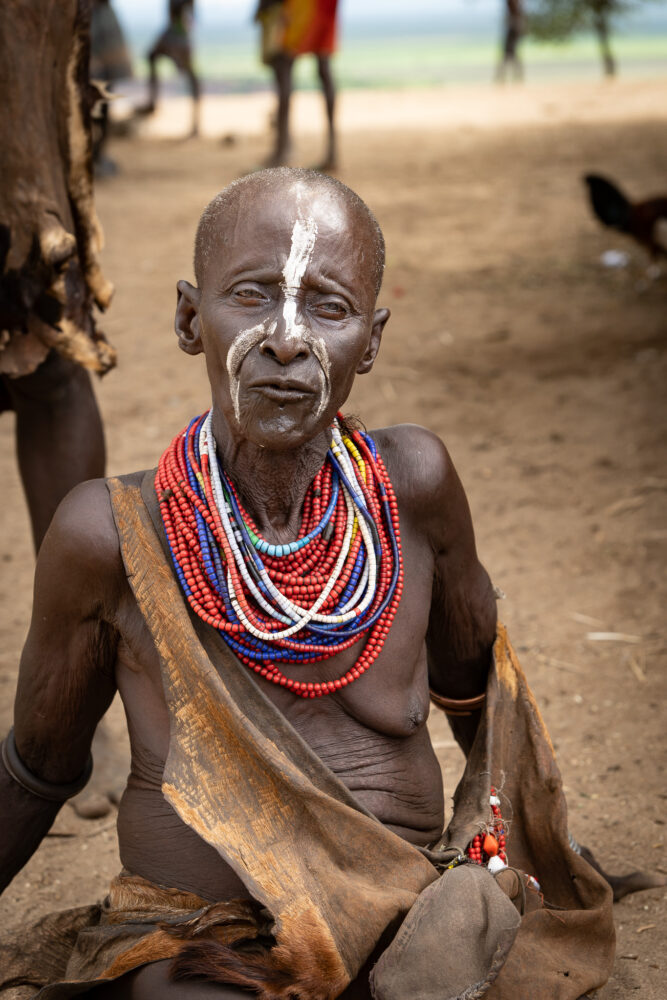
As for ceremonies, understand that you may or may not get to experience them as there is no calendar of events to consult when timing your visit. There’s no promise there will be a wedding or bull jump. Many of these events are held on weekends, so it helps to plan your visit for then OR give yourself some flexibility by contacting the guide I recommend and tailoring your trip to the dates he recommends.
Bed Bugs
In 10 years of travel, I have never had bed bugs until Ethiopia. There’s a first time for everything. Unfortunately, this is not a novel experience for travelers here. I recommend checking the sheets everywhere you stay. If you get them, isolate the clothing in Ziplock bags until you have the opportunity to dry them in a dryer on high heat. This is the only way to kill the bugs.
Tipping in the Omo Valley
You’re going to get asked for money frequently while in the Omo Valley. While you probably shouldn’t just go handing out heaps of cash, it’s harmless to gift the tribes some money via the chief or your guide. You can also contribute by purchasing some handmade goods or other bracelets directly from the people who make them.
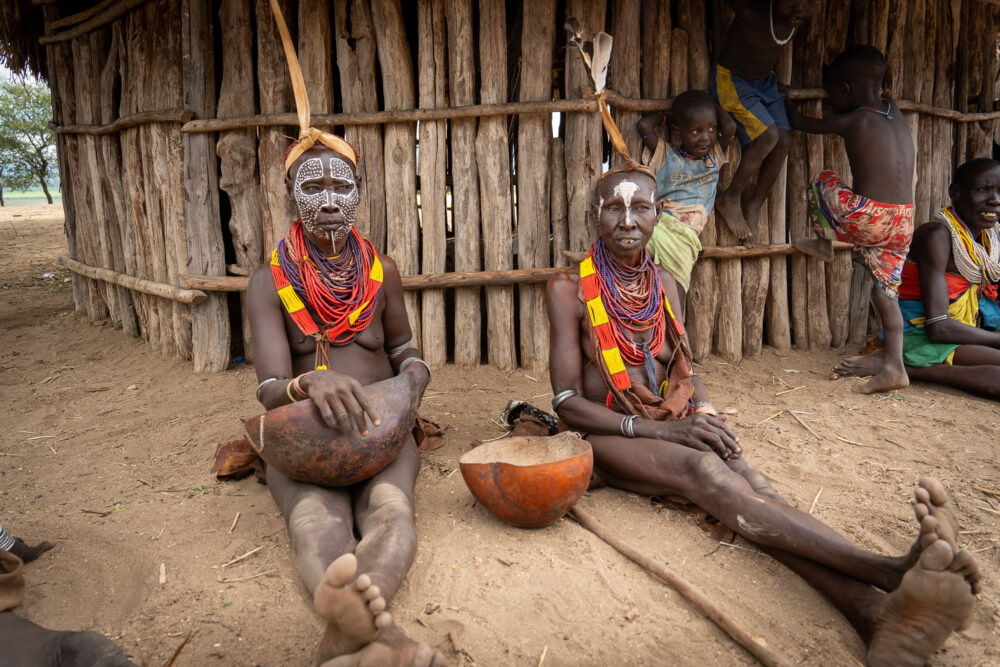
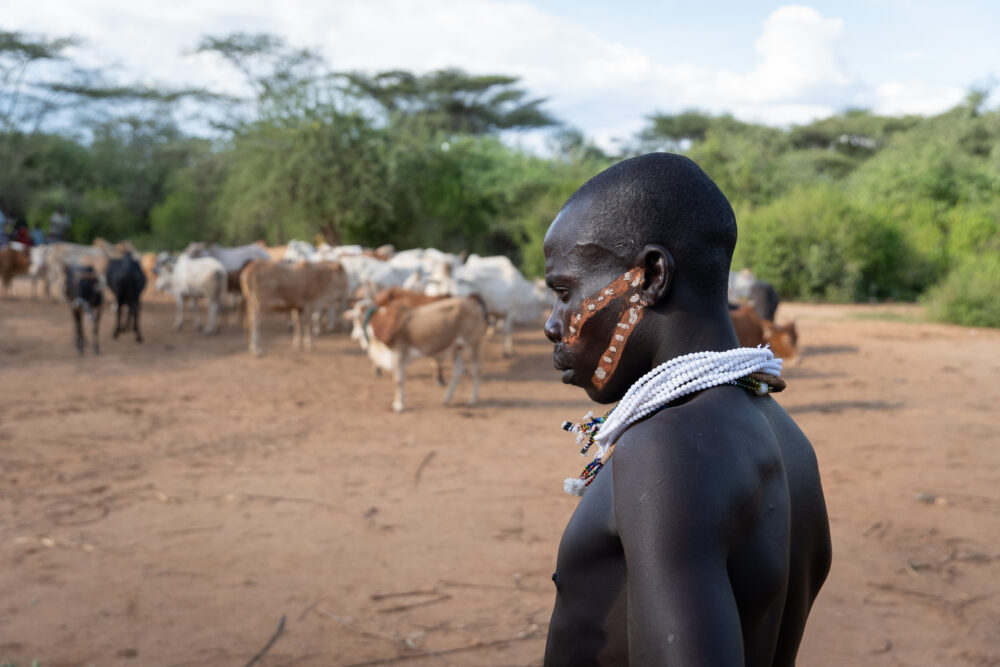
We also thought it was appropriate to give our driver and guide a tip for being so wonderful over the three days we were with them.
Is the Omo Valley Worth the Hype?
Or has it become yet another tourist trap?
This is where my own personal opinion is going to color this post. But let’s be honest, this whole blog is peppered with my opinions. Why stop now? We thoroughly enjoyed our visit to the Omo Valley. In fact, this alone is what made our visit to Ethiopia worthwhile. I worried that the numerous online guided tours and countless wannabe-NatGeo photographers would flood Omo with tourists. And yes, Omo is a popular attraction, but in a relatively, unpopular tourist destination. Because of Ethiopia’s relative instability, ongoing civil wars, and overall exceedingly uncomfortable and difficult travel logistics, most would-be tourists are scared away.
Of the ones that do visit, most will pop into a village for an hour or so. If you take our advice in this Omo Valley Guide and choose to stay overnight as often as possible, you’ll be granted unique access to the communities and offered an olive branch of respect by them as well. Done the “wrong way, ” yes, it can be a tourist trap and you might find yourself feeling like a human ATM paraded from tribe to tribe.
But it can be done in a worthwhile and enjoyable way, so I feel that anyone interested in the Omo Valley tribes should absolutely pay a visit and follow this Omo Valley Guide.
Save This Post For Later!
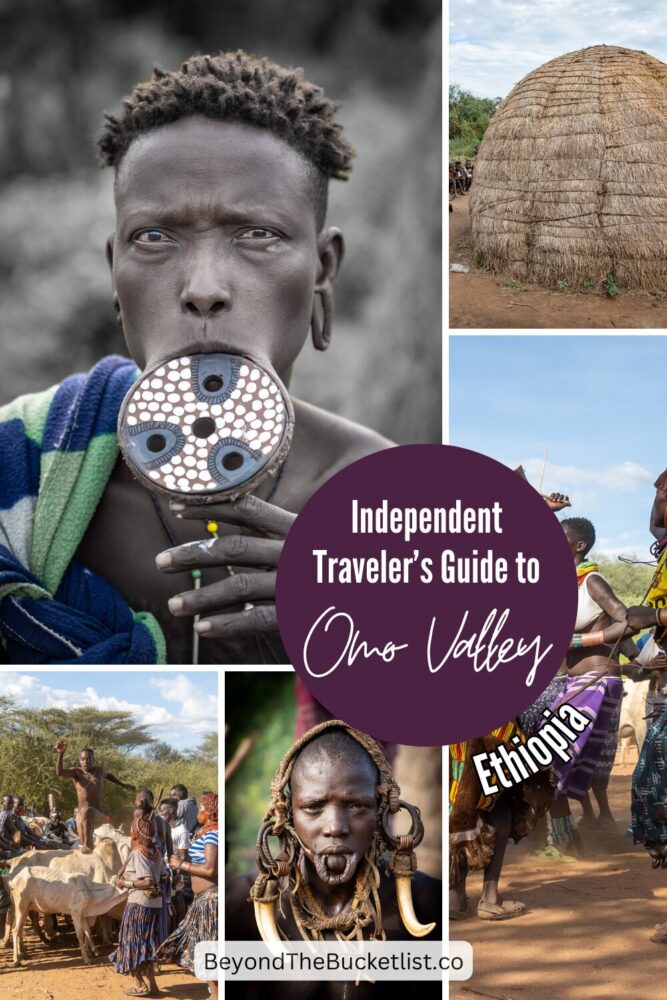
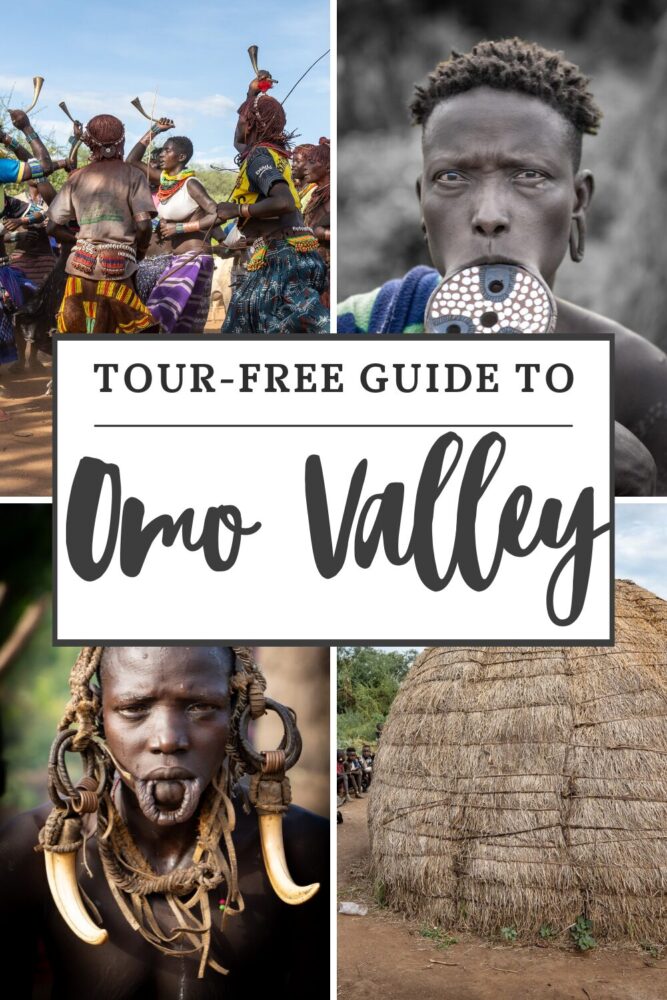
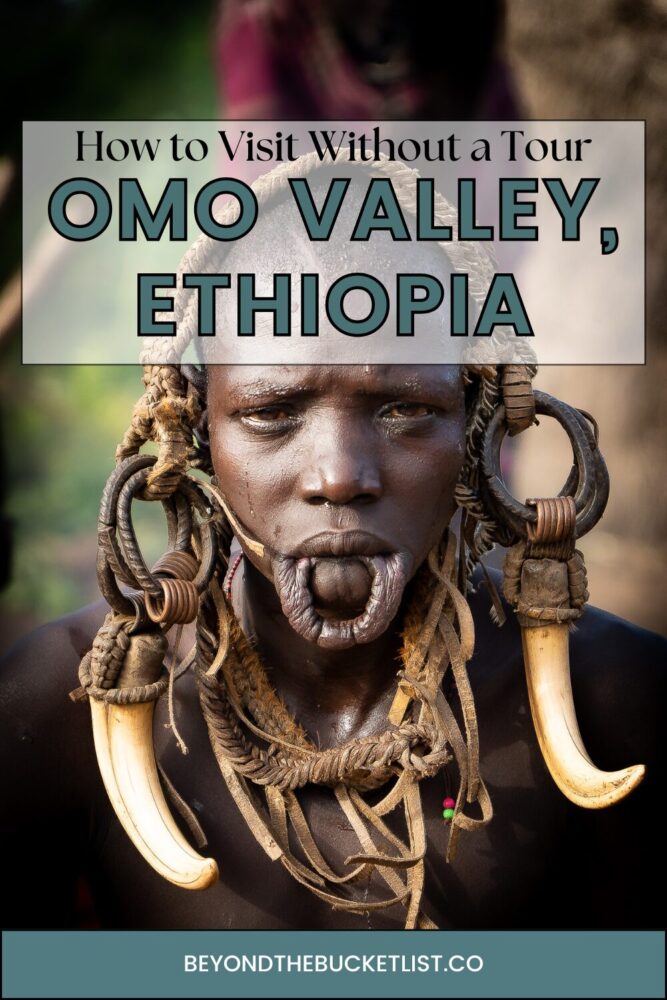
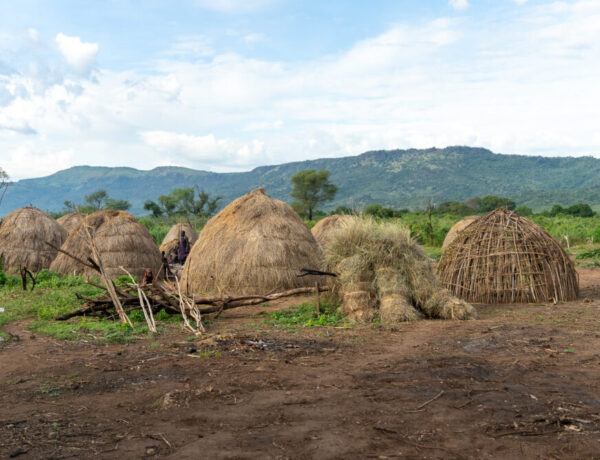


No Comments